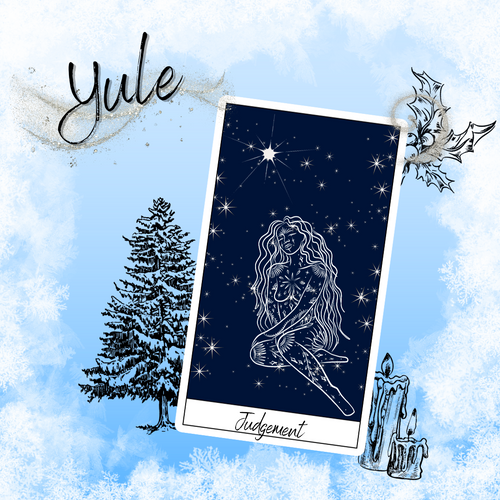Yule, also known as Christmas, is the celebration of the winter solstice. This holiday is centered around the sun and bringing its warmth back. Hundreds of years ago, December was a certain time of the year. Winter was slowly settling in, days grew shorter and colder. People were scared the sun was leaving and not coming back. So they prepared feasts, lit fires and celebrated to anticipate the sun to come back. Yule festivities could last from 12 days to a month depending on people's beliefs. The celebration started on the solstice, which was December 25th. How is it that today, the solstice is on the 21st you might ask. Well, back then they used the Julian calendar. In 1582, it was replaced by the Gregorian calendar, making the solstice 4 days earlier.
Different regions of Europe had different stories associated with Yule. The celts believed Yule celebrated the triumph of the Oak King over his brother the Holly King. Romans, Greeks, Persians, they all had their own traditions and stories. The sun and the returning of the light always being the center theme.
The Scandinavian's legends and traditions are particularly interesting. They would bring evergreen trees, mistletoe and holly inside their homes for protection. Since they were the only plants that could survive the harsh winter, people believed they could ward off evil spirits. They also made wreaths for doors and windows to keep at darkness bay. Scandinavians worshiped Odin, the chief god of Norse mythology and the god of war, death, magic and wisdom. The legend says that during the darkest and longest night of the year, a ghostly procession took place in the night sky. Spirits upon phantom horses rode through the sky, led by Odin, atop his eight legged steed Sleipnir. The legendary wild hunt had begun! They would charge through the sky, carrying the souls of the dead to the Otherworld. It is said that Odin would stop at houses during the night to bring treats to children. While he entered houses through the fire holes to deliver his goods, his stallion, Sleipnir, would eat the hay left in children's boots for him. Let's not forget that Odin was often depicted as an old man with a long beard… Reminds you of someone?
Later on, with Christianity spreading to Europe, pagan holidays began to fade. It is believed that the Christians modified Yule's traditions and stories to fit with Christianity in order to easily assimilate the pagans. As you can see, today's celebration of Christmas still has quite a few Yule traditions. From the Yule log to the decorated trees, Yule is ever-present in your homes.
Here's a list of activities to do to celebrate Yule:
- Decorate your tree with natural decorations such as pine cones, dried slices of oranges and dried cranberries (and reuse them next year).
- Go for a walk and take time to enjoy nature's beauty under the white blanket of snow.
- Feast, with friends and family.
- Focus on giving time and love to people instead of pricey gifts.
- Go for eco-friendly wrapping paper such as reusable wrapping cloth.
- Set an altar with orange, yellow, red and green colors to commemorate the sun and evergreen plants.
And many more. Don't hesitate to create your own Yule tradition!
- Tan
Sources: https://thevikingdragon.com/blogs/news/yuletide
https://www.worldhistory.org/Wheel_of_the_Year/
